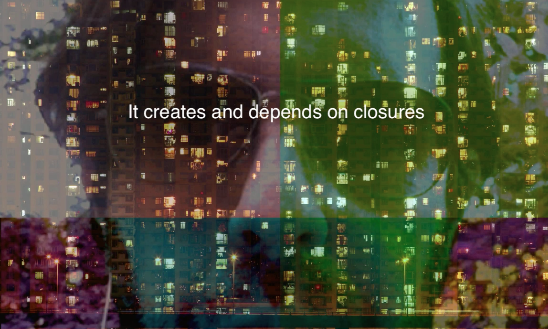This post is essentially an attempt to begin to merge several parallel trains of thought that have been prompted by several projects I have been working on and several works that I have been reading. Again, I turn to the source of most of my inspiration, those people at the Centre for Digital Education at the University of Edinburgh. I will just go ahead and list my sources, at least the ones that have inspired this particular post, in an attempt at full disclosure. The fullest of the full disclosure would have me state that I consider these authors colleagues.
- The Manifesto for Teaching Online (2016)
- . 2015. Open education. The need for a critical approach. Learning, Media and Technology. 40(3):247-250.
- Knox, J. (2013). Five critiques of the open educational resources movement. Teaching in Higher Education, 18(8), 821-832.
I echo their belief that open is often positioned or at least associated with “unproblematic self-direction and autonomy” (Knox, 2013). I further echo the Manifesto in its proclamation that “openness is neither neutral nor natural: it creates and depends on closures” (2016). This is more than a mere semantic distinction; there is a tension (perhaps problematic or perhaps generative) between open as structure (which I might suggest is impossible) and open as practice (which I suggest is indeed possible). And this extends beyond mere access, which seems to be from which most of the open labels emerge: open source, open access, open course, etc. Open as structure is problematic insofar as it doesn’t exist; open is dependent on closures and it isn’t inherently a naturally occurring phenomena, as much of the literature, at least implicitly, suggests. That open is some sort of reversion to the default position of nature itself. I don’t believe that to be true. Our learning activity, digitally or otherwise, is dependent on closure. Whether we choose to call these contexts, frames, scopes of inquiry, or what have you matters not. They might be fluid and iterative, but they are not open. Again, this is more than a mere semantic distinction. So I might suggest a shift towards open as practice. Practices move with great alacrity through closures, or at least they have the potential to do so.
The following video was designed strictly to move this conversation away from the page for a moment to test this idea. Migratory practice (academic rigor applied in non-textual form with practices borrowed from more informal remix cultures) as open practice as opposed to open learning as open structure (at a minimum, the video is highly dependent on closures in terms of frames, dimensions, layers, etc.). Pardon the ridiculous large buffer around the video.
Open practices allow the learner to create closures to engage open digital space: a copy and paste from Wikipedia, a remix of digital content posted to YouTube, a curated Pinterest board, a blog post, and playlist are all ultimately closures structured by open practice. Open learning as practice challenges the pervading binaries of open learning insofar as many of these digital practices are enacted in what might be perceived as closed spaces; for example, an open digital practice of participating in a discussion board on a closed Learning Management System (LMS) is open practice in a closed structure. The practice itself, that of engaging in discussion online, is ported from, or influenced by, the open practice of the learner emerging from the more open, or less explicitly closed, spaces of digital activity.
However, positioning open as migratory practice suggests that open equates to fluid; the open practices are fluid, iterative responses to and engagements with the lived world of digitally-enhanced space. They evolve, not unproblematically, through iterative and reflective practice. This definition does not presuppose that all open digital practices are inherently fluid in their structuring; some are indeed sedentary insofar as they move unaltered from one digital space to another. Open practices are either structurally fluid (an adaptation) or spatially fluid (the use of an open digital practice from one community in another- an appropriation). An adaptation might involve the adjustment of language used in one digital community to the context of another, by way of example. A spatially fluid example might involve the use of a particular digital application in a another context or community.
So I think this is an instance where some further theorizing is necessary (as the crew from Edinburgh have certainly accelerated); it is also an instance where I feel my worlds most readily pollinating one another. In the ICT4D communities in which I work, I readily extol the virtues of open learning as a means of developing professional capacity. I just wrote a post to this effect earlier today. I think both this position of open learning as development good and open learning as problematic tension can exist simultaneously. Rather than negation, I see pollination. The exploration of the problematic elements of open allows me to identify and possibly mitigate the limitations that will emerge as a result of this for the development community. The development community provides me constant feedback on what works and what doesn’t pragmatically, which will in turn inform my theoretical work. This is a healthy tension as I see it.

RT @mseangallagher: Open learning: migratory practice as opposed to problematic structure. https://t.co/lKnhIcKT8o #openlearning #elearning…
#openlearning: migratory practice as opposed to problematic structure. https://t.co/0QuCjog1w3 #elearning #mlearning https://t.co/jB9JmaXsr3
RT @mseangallagher: Open learning: migratory practice as opposed to problematic structure. https://t.co/lKnhIcKT8o #openlearning #elearning…
“Migratory practice as open practice vs. #openlearning as open structure.” https://t.co/RXkZCa7QaU #elearning
#openlearning: migratory practice as opposed to problematic structure. https://t.co/n1ZNlLmrAu
Open learning: migratory practice as opposed to problematic structure. https://t.co/CI3lM03CVT #openlearning https://t.co/x0Mw2duq3D